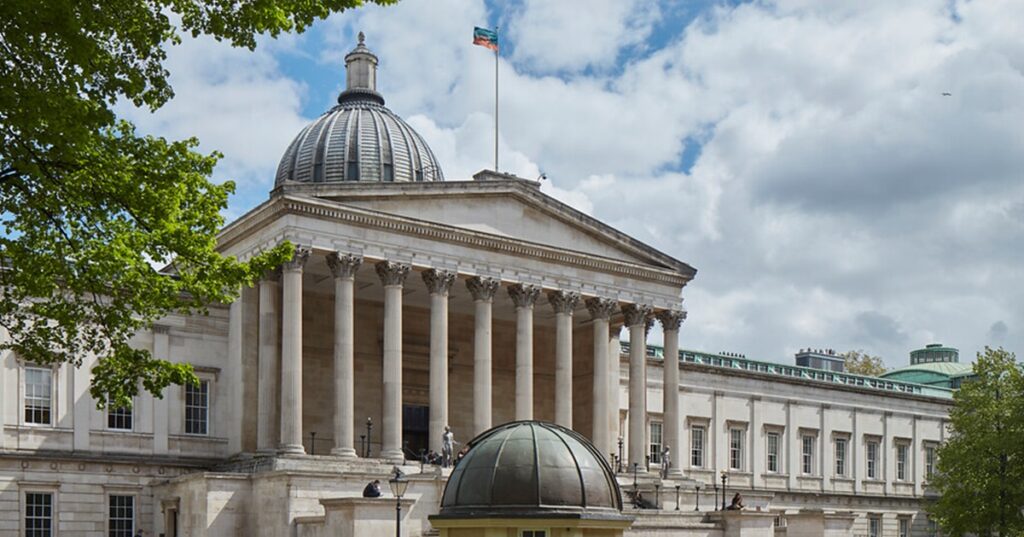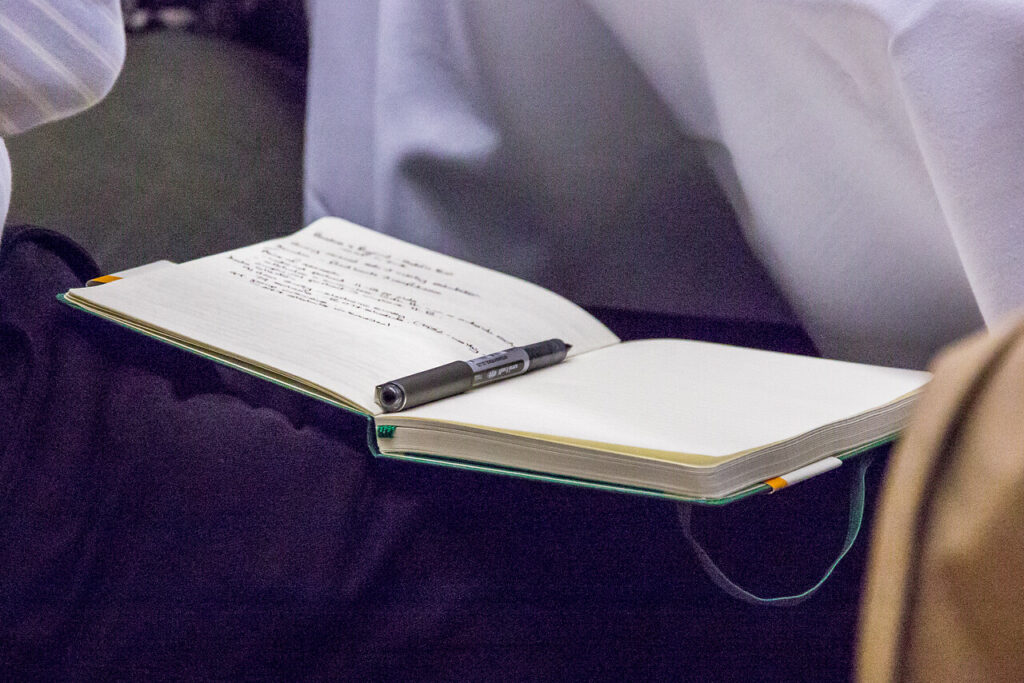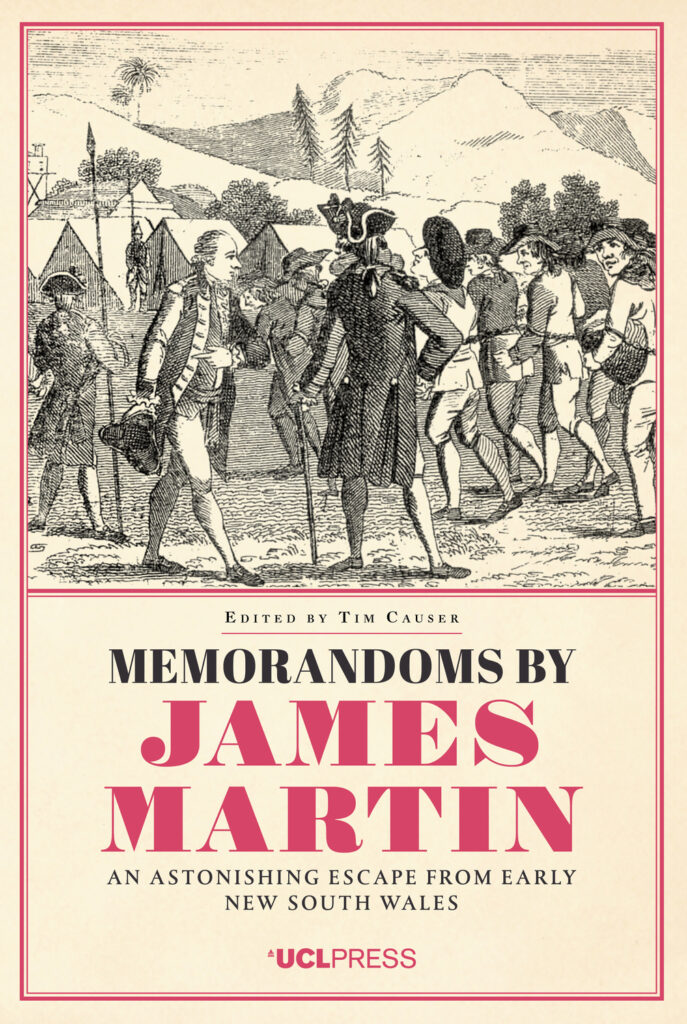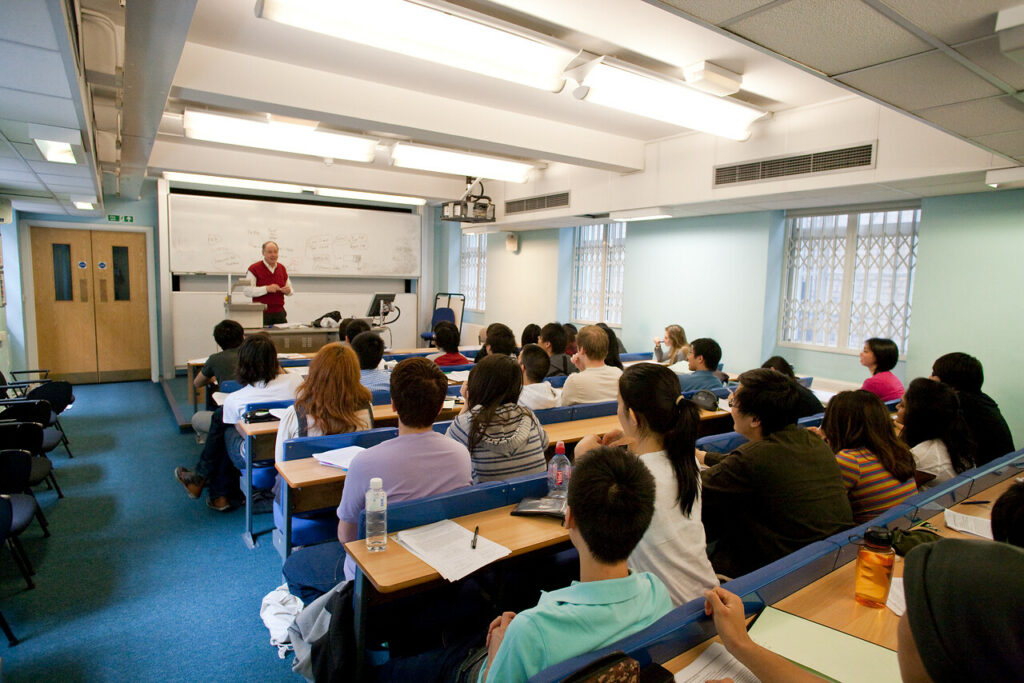From its foundation on 11 February 1826, UCL embraced a progressive and pioneering spirit. It was the first university in England to admit students regardless of religion, and made higher education affordable and accessible to a much broader section of society. It was also effectively the first university to welcome women on equal terms with men. From the outset, UCL showed a commitment to innovative ideas and new methods of teaching and research.
To mark the 199th anniversary of the university’s foundation, we are proud to share an extract from The World of UCL exploring how the university was founded, and how – though not as its founder, as is commonly believed – utilitarian philosopher Jeremy Bentham was involved.
What we know today as University College London (UCL) was founded in 1826 and first opened its doors to students as the self-styled ‘University of London’ in October 1828. London at that date was the largest city in Europe and almost the only capital without a university. The new institution was intended from the beginning to open higher education to people excluded from the ancient seats of learning in Oxford and Cambridge. Its first students included nonconformists, Jews, Catholics and others. Notoriously described by Thomas Arnold as that ‘godless institution in Gower Street’, England’s third university prompted anxiety, contempt and curiosity among the early nineteenth-century establishment.
It is generally but incorrectly believed that Jeremy Bentham was the founder of UCL. This myth is sustained in a bizarre manner by the display of the body of the great philosopher of ethics, jurisprudence and government, ‘in the attitude in which I am sitting when engaged in thought’, as he instructed before his death in 1832. Besides the box with Bentham in it, UCL possesses over 200 more boxes full of his writings, a collection that has been called ‘one of the most remarkable monuments to the mind of a single man in all its aspects to be found anywhere’.
Prominently displayed in the Flaxman Gallery is the huge painting undertaken in 1922 by Henry Tonks, the then Slade Professor of Fine Art, portraying William Wilkins, the architect, offering the original College plans up to Bentham for his approval, while Henry Brougham, Thomas Campbell and Henry Crabb Robinson look on. The ‘Auto-Icon’ has been in the possession of UCL since 1850, and occasionally attends meetings of the College’s governing body. His most recent appearance was at a Council meeting in July 2013, the minutes recording that Jeremy Bentham was ‘present but not voting’.
In fact Bentham played no such personal role in the establishment of the College and was an old man of 80 when it opened. He did give his blessing and financial support to the venture, however, and the founders certainly owed a very considerable intellectual debt to him. UCL was founded by what Bentham called ‘an association of liberals’ in which the leading roles were played by an improbable duo formed by a poet and a lawyer. Credit for the original proposal must go to Thomas Campbell, the now largely forgotten Scottish poet whose Pleasures of Hope (1799) brought him popular fame and a rapid entrée into London literary society. In 1820, on a visit to Bonn, he was impressed by the religious toleration of the re-founded university there and formed the idea of establishing ‘a great London University’ for ‘effectively and multifariously teaching, examining, exercising and rewarding with honours, in the liberal arts and sciences, the youth of our middling rich people’. In February 1825 The Times printed a powerful open letter on this subject from Campbell to Henry Brougham, another Scot. Brougham was a brilliant man, one of the founders of the Edinburgh Review, who had moved to London to seek commanding outlets for his versatility and energy in the law and politics. First elected as an MP in 1810, he became particularly involved with the cause of popular education, associating himself with George Birkbeck and the mechanics’ institutes and founding in 1826 the Society for the Diffusion of Useful Knowledge.
Brougham regarded himself as a Benthamite, as a believer in the utilitarian principle of ‘the greatest happiness of the greatest number’ – though it has been claimed that in his view the greatest number was number one. His extravagant style smacked of humbug to many, but he was a man who got things done. Under his direction Campbell’s dreams of a ‘great London University’ were turned into reality. A second university which provided a model for UCL was Thomas Jefferson’s carefully planned University of Virginia, which had opened in 1825. The University of Edinburgh was the most powerful model of all, familiar as it was to Brougham and many of the founding professoriate in London.
When Campbell and Brougham began to organise a university for London, the only existing universities in England were those long established at Oxford and Cambridge – described by Bentham as ‘the two great public nuisances … storehouses and nurseries of political corruption’. Membership of the Church of England was necessary for admission to the one and for graduation from the other. All nonconformists, Catholics and Jews were thus excluded, while many Anglicans were kept out by the social restrictiveness, the cost or the institutions’ characteristic intellectual backwardness. The old universities were seen to be increasingly out of touch with a rapidly changing society. The population of England doubled in the first half of the nineteenth century, and the combined effects of industrialisation and urbanisation were producing new social patterns with new pressures and demands. The industrial revolution necessitated an extended system of higher education.
The main appeal of the new university was therefore to the interests excluded from the established system, such as it was, and to the various new social groups. Isaac Lyon Goldsmid, a millionaire financier and later the first Jew to become a baronet, played an especially significant role. He brought Campbell and Brougham together on the project and ensured the considerable support of the Jewish community. The nonconformists were actively led by Francis Augustus Cox, the Baptist minister of Hackney, while a different dissenting strand was represented by the support of Zachary Macaulay, whose main work had been devoted to the
abolition of the slave trade. Catholics were represented by the Duke of Norfolk and the Whig establishment provided a number of other titled luminaries. James Mill, the utilitarian philosopher and father of John Stuart Mill, actively represented Benthamism, and the various progressive influences rubbed shoulders readily with supporters from the City of London.
As the result of a year-long series of public and private meetings chaired by Brougham, the College came into formal existence on 11 February 1826 with the signing of an elaborate Deed of Settlement. It was agreed to raise a substantial sum of between £150,000 and £300,000 by the selling of shares of £100 each. From among the ‘proprietors’, as the shareholders were called, 24 men were to be elected as the Council, the all-powerful body which was to control the University’s property, appoint the Professors and regulate the education of the students. It was a fundamental principle of the new institution that religion in any form should be neither a requirement for entry nor a subject for teaching. As a corollary it was decided that no minister of religion should sit on the Council. The Revd Dr Cox served therefore as Honorary Secretary of that body until he became UCL’s Librarian in 1827.
From the outset the promoters sought incorporation. Brougham’s soundings towards a Royal Charter in 1825 were rebuffed by the Tory government of the day, and his subsequent efforts to achieve an Act of Parliament were defeated by the influence of Oxford and Cambridge. Parliamentary assistance was provided by Joseph Hume, one of the members of the original Council. A leading
radical, Hume was indefatigable in support of the College as well as of those other great progressive causes of the age, Catholic emancipation and parliamentary reform. After 1832 he was joined in the House of Commons by another member of the original Council, William Tooke, a prominent solicitor who became the first Treasurer of the College and of the Hospital.
The strength of the combined opposition of Oxbridge and of the London medical profession to legal recognition of the College as a ‘University’ could not easily be overcome in Parliament, despite the additional efforts of Brougham in the House of Lords, where he had gone in 1830 as Lord Chancellor. When UCL did eventually get its first charter in 1836, it took an unexpected form.
A base in Bloomsbury
One of the first acquisitions for the new University, even before it was officially constituted, was a building site. Nearly eight acres in Bloomsbury were bought in August 1825 for £30,000 by three of the richest promoters, Goldsmid, John Smith and Benjamin Shaw, and held by them until it could be transferred to the new University. Previously the site had served variously as a drilling ground, a place for duelling and a rubbish dump. It had been intended to develop it as Carmarthen Square, a projected addition to the yet unfinished Bloomsbury. By the time of the holding of the first meeting of the proprietors at the end of October 1826, 1,300 shares in the University had been sold, 200 fewer than the minimum believed necessary. Plans for the building were nevertheless being pressed ahead, and the digging of foundations was already underway. Despite the bad weather of the winter of 1826–27, work was sufficiently advanced by 30 April 1827 for the ceremony of laying the foundation stone.
This was undertaken with full masonic rights by the Duke of Sussex; a brother of George IV and the only member of the royal family with any intellectual pretensions, he was well known for his liberal sympathies. A copper plate with an inscription duly read out by Cox was placed in a cavity in the stone together with the traditional coins. Afterwards some 500 people gathered for a dinner at the Freemasons’ Tavern at which many speeches were made and £8,000 was raised. Henry Brougham made a memorably sarcastic oration attacking the opponents of the University, but annoyed Thomas Campbell’s friends by appearing to accept credit for founding the University single-handed. Campbell was absent from the foundation ceremony, being occupied as Lord Rector of the University of Glasgow, and he did not serve on the Council beyond the first year. Squeezed out by Brougham, Campbell’s connection with the University he had proposed ended as it was coming into being.
The architect chosen for the College was William Wilkins, whose fashionable, neo-Grecian design submitted in response to public advertisement in August 1825 was found exceedingly fine. Wilkins had previously designed new college buildings for Downing and King’s College at Cambridge, as well as Haileybury, the East India Company’s college in Hertfordshire. UCL is widely acknowledged to be Wilkins’ greatest work, far more distinguished than the National Gallery he built in Trafalgar Square a few years later. The main entrance was to be at the top of a wide staircase under a ten-column Corinthian portico topped by an elegant dome. A chapel was conspicuous by its absence, the main entrance being intended to give on to the three principal rooms: the Museum of Natural History to the left, the Library to the right and the Great Hall directly ahead. Lecture theatres of various sizes led off generous cloisters running to the impressive wings that contained further suites of rooms. In the event, shortage of money meant that Wilkins’ splendid design was only partially carried out.
The lowest tender received from a builder for the construction of Wilkins’ building was £110,000 – almost as much as the College had raised in total by autumn 1826. It was confidently declared that: ‘the wish of the Council will appear to have been rather to select a great design suited to the wants, the wealth, and the magnitude of the population for whom the Institution is intended, than one commensurate with its present means.’ To this heroic decision the College owes the iconic centrepiece to its present rambling and in many ways unimpressive premises; the Portico has long formed part of UCL’s branding. It was decided to build the central range of the building with the Portico and Dome as envisaged by Wilkins, but to delay the addition of the two wings until the financial position improved. Together with the stone ornamentation, various fittings and the two front lodges, the cost was not to exceed £86,000. Financial stringency also involved postponement of the Great Hall and strict curtailment of expenditure on
the Museum and Library. The steps under the Portico thus became something of a lavish white elephant; ‘the grandest entrance in London’, it has been called, ‘with nothing behind it’.
Augustus Pugin regarded the architecture of the College as pagan, adding acidly that it was ‘in character with the intentions and principles of the institution’. The College had to put up with a good many such snide remarks and attacks, especially in the crucial years between Campbell’s letter in The Times in 1825 and the opening in 1828. Verses and cartoons ridiculing what was quickly dubbed ‘the Cockney College’ or ‘the radical infidel College’ were published in the ultra-Tory John Bull and other papers:
Come bustle, my neighbours, give over your labours,
Leave digging and delving, and churning:
New lights are preparing to set you a staring,
And fill all your noddles with learning.
Each dustman shall speak, both in Latin and Greek,
And tinkers beat bishops in knowledge –
If the opulent tribe will consent to subscribe
To build up a new Cockney College.
‘The Cockney College’ in John Bull, July 1825
The opposition was provoked partly by the apparent pretension of a joint-stock company masquerading as a university in a period of financial speculation and partly by the College’s appeal to social groups excluded from the two old universities – an appeal intolerable to the Establishment. Above all it was provoked by the rejection of financial setbacks, the great hopes held by many for the new institution continued. Before the building had begun, the College was treated to the publication of what the historian Thomas Babington Macaulay called its ‘horoscope’ in the pages of the Edinburgh Review. ‘We predict’, he wrote, ‘that the
clamour by which it has been assailed will die away, that it is destined to a long, a glorious, and a beneficent existence, that, while the spirit of its system remains unchanged, the details will vary with the varying necessities and facilities of every age, that it will be the model of many future establishments, that even those haughty foundations which now treat it with contempt, will in some degree feel its salutary influence.’ A very bold prediction at the time, Macaulay’s words turned out to be remarkably percipient.
About the Authors
This is an excerpt from the open access book The World of UCL.
Negley Harte is Emeritus Senior Lecturer of History at UCL. He is interested in three main areas of British history: the origins of industrialisation; textile production and consumption (sixteenth to nineteenth centuries); and the history of higher education.
John North was appointed Assistant Lecturer in UCL’s Department of History in 1963, where he taught Greek and Roman History for 40 years. Since 2003 he has been Emeritus Professor of History.
Georgina Brewis is Senior Lecturer in the History of Education at the UCL Institute of Education. She is a historian of higher education, youth and voluntary action and teaches History across UCL. She is also a member of the International Centre for Historical Research in Education (ICHRE).









